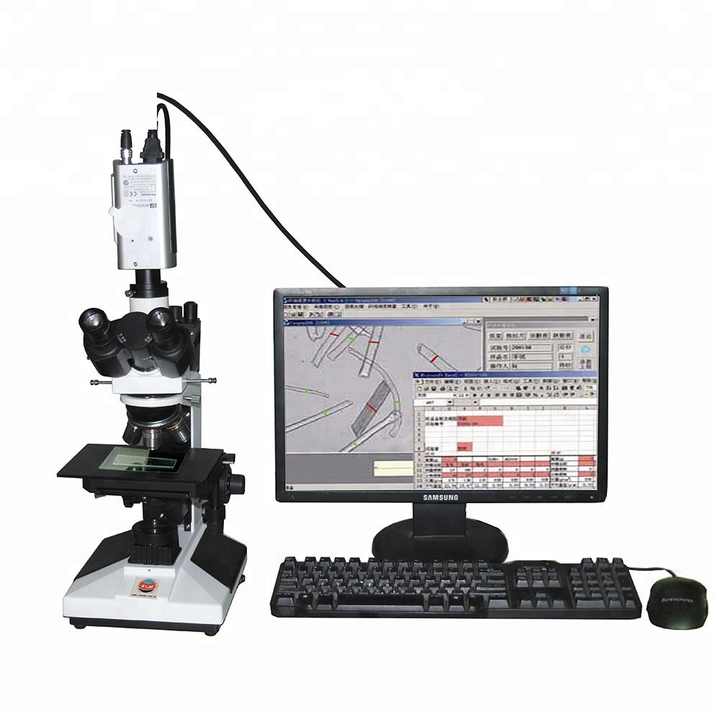Optimize Your Fiber Optic Efficiency: Recognizing Optical Fiber Diameter Analyser Innovation
The performance of fibre optic systems is critically affected by the precision of their size, an aspect commonly overlooked in the pursuit of optimum signal integrity. Recognizing the technology behind optical fiber diameter analysers exposes the detailed balance in between measurement precision and production quality. These devices not just enhance compliance with industry standards however additionally give real-time insights that can preemptively address possible issues. Nevertheless, the effects of their usage extend beyond plain measurement; they can fundamentally change the landscape of fiber optic efficiency. What aspects should one think about to harness their complete potential?
Significance of Optical Fibre Diameter
The size of optical fiber plays a crucial role in determining the efficiency and performance of interaction systems. It affects numerous essential criteria, consisting of the mode of light propagation, attenuation, and data transfer ability. Larger sizes generally permit for several light settings, promoting greater data transmission prices. On the other hand, smaller sizes have a tendency to support fewer settings, which can enhance signal quality and minimize crosstalk.

Furthermore, recognizing the size's effects can lead to set you back financial savings by decreasing the need for signal boosting and repeaters in extensive networks (optical fibre diameter analyser). In final thought, the importance of optical fiber size can not be overstated, as it straight affects the general efficiency and dependability of modern-day communication systems

Just How Diameter Affects Signal Quality
Signal top quality in optical fiber systems hinges dramatically on the diameter of the fiber. The diameter influences numerous vital parameters, consisting of depletion, data transfer, and modal diffusion. A smaller size can result in greater attenuation prices, resulting in signal loss as light travels through the fibre. This attenuation can compromise the integrity of the transmitted information, causing a decrease in signal high quality, especially over fars away.
Alternatively, bigger diameters typically enable improved light capture and minimized modal dispersion, enhancing signal clearness. In multimode fibers, a larger core diameter can support numerous light settings, but it might also present intermodal diffusion, which can degrade signal top quality. For that reason, selecting the optimum fiber diameter is vital for attaining the desired efficiency in certain applications.
Furthermore, the communication between the fiber size and the wavelength of the light used plays an important function in identifying the effective transmission distance and total signal stability. Understanding how fibre diameter influences signal top quality is crucial for network designers and engineers making every effort to optimize optical fibre systems for reputable, high-speed information transmission.
Overview of Size Analyser Technology
In numerous optical fibre production procedures, exact measurement of fiber size is necessary for guaranteeing consistent performance and quality (optical fibre diameter analyser). Diameter analysers are innovative tools developed to assess the physical dimensions of optical fibers with high accuracy. They employ advanced optical and laser modern technologies to measure the diameter, ovality, and concentricity of the fiber, therefore supplying important information for quality assurance
These analysers can run in-line throughout the production process or as component of off-line screening protocols. In-line systems enable real-time surveillance, enabling manufacturers to adjust parameters instantly, thereby maintaining optimum production conditions. Off-line analysers, on the other hand, supply comprehensive analyses of sets, guaranteeing that any inconsistencies from specified resistances are recognized and attended to.
Size analysers substantially add to the reduction of defects in optical fibres, enhancing overall product integrity. By constantly determining vital criteria, these technologies facilitate compliance with industry standards and specs. As the need for high-performance optical fibers proceeds to increase, the role of size analysers becomes increasingly important in attaining the preferred top quality and performance criteria in fiber optic systems.
Secret Attributes of Fibre Size Analysers
Although various designs of fiber size analysers exist, they typically share several essential attributes that improve their performance and integrity. One of one of the most considerable attributes is high-resolution dimension capabilities, which guarantee precise size analyses, crucial for maintaining quality assurance in fiber manufacturing. Furthermore, several analysers include innovative optical sensing units created to discover minute variants in fibre diameter, thus offering invaluable information for procedure optimization.
One more vital feature is real-time tracking, allowing operators to get prompt feedback on fiber diameter throughout the production procedure (optical fibre diameter analyser). This ability promotes quick changes and decreases the probability of issues. Numerous analysers also come outfitted with user-friendly interfaces, making it possible for drivers to conveniently browse through data and settings results
Furthermore, robust information storage and evaluation performances are vital for tracking historic performance fads and making certain compliance with market requirements. These features collectively contribute to the effectiveness of fibre size analysers in optimizing fiber optic performance.
Best Practices for Fibre Optimization

First, routine calibration of optical fiber diameter analysers is vital. This makes sure more information precise measurements and lessens prospective inconsistencies that could impact efficiency. Next, preserving a clean workplace is important; dust and contaminants can cause signify destruction.
Furthermore, it Resources is very important to select fibres that fulfill certain application requirements. This entails reviewing aspects such as depletion, data transfer, and ecological conditions. Appropriate installation methods should likewise be complied with, consisting of avoiding sharp bends and too much stress, which can compromise fibre honesty.
In addition, utilizing sophisticated tracking systems can help with real-time performance analyses, allowing timely identification of issues. Normal testing and upkeep need to be carried out to make sure that fibres stay within ideal functional parameters.
Finally, training workers on the most up to date fiber optimization innovations and methods will certainly improve their capability to carry out effective techniques. By adhering to these finest practices, organizations can dramatically boost the efficiency and life-span of their optical fiber systems, making sure effective interaction and information transfer.
Verdict
Finally, the combination of optical fibre diameter analyser modern technology is essential for making the most of fiber optic efficiency. By making sure accurate measurements of fiber dimensions, these analysers significantly improve signal quality and decrease losses throughout data transmission. Routine calibration and maintenance of the analysers are critical to copyright ideal efficiency and conformity with sector standards. Eventually, the application of this modern technology promotes enhanced data transmission prices and enhances signal stability, adding to the general effectiveness of fiber optic systems.
Signal top quality in optical fiber systems hinges significantly on the diameter of the fibre.In many optical fiber production processes, accurate measurement of fibre size is important for making certain consistent performance and quality. Your Domain Name As the demand for high-performance optical fibres continues to rise, the role of size analysers becomes increasingly essential in achieving the desired top quality and efficiency criteria in fibre optic systems.
These functions collectively contribute to the effectiveness of fiber size analysers in enhancing fibre optic efficiency.
In conclusion, the assimilation of optical fibre size analyser modern technology is vital for maximizing fibre optic performance.